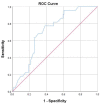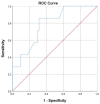The Effect of Probiotics on the Prognostication of the Neutrophil-to-Lymphocyte Ratio in Severe Multi-Trauma Patients
- PMID: 38673046
- PMCID: PMC11051514
- DOI: 10.3390/jpm14040419
The Effect of Probiotics on the Prognostication of the Neutrophil-to-Lymphocyte Ratio in Severe Multi-Trauma Patients
Abstract
Background: The ratio of neutrophils to lymphocytes [NLR] is one of the most accepted prognostic indices and demonstrates a positive correlation with the severity of a disease. Given that probiotics exerted immunomodulatory properties and thus positively affected lymphocytopenia induction in severely ill patients, we performed a post hoc analysis in the ProVAP protocol to investigate whether probiotics affected the prognostication of NLR in respect to ventilator-associated pneumonia in multi-trauma patients. This cohort mandatorily involved severe traumatic brain injury patients.
Methods: The white blood cell data of all patients, after being retrieved for the days 0 and 7, were statistically assessed in respect to neutrophils, lymphocytes and NLR among the 4 sub-groups of the study: placebo/no-VAP, placebo/VAP, probiotics/no-VAP, and probiotics/VAP.
Results: Lymphopenia was dominant in placebo sub-groups, while an increased level of lymphocytes was prominent in probiotics sub-groups. This resulted in an increase [p = 0.018] in the NLR value in the probiotics/VAP group in relation to the probiotics/no-VAP cohort; this was an increase of half the value of the placebo/VAP [p < 0.001], while the NLR value in placebo/no-VAP group increased almost four-fold in relation to probiotics/no-VAP [p < 0.001]. Additionally, the ROC curve for probiotic-treated patients revealed a NLR7 cut-off value of 7.20 as a prognostic factor of VAP (AUC: 78.6%, p = 0.015, 95% CI: 62.6-94.5%), having a high specificity of 90.2% and a sensitivity of 42.9%.
Conclusions: NLR may considered a credible prognostic biomarker in multi-trauma patients since it can evaluate the immunomodulatory benefits of probiotic treatment. However, the results of the present post hoc analysis should be interpreted meticulously until further evaluation, since they may be basically species- or strain-specific.
Keywords: immunomodulation; lymphocytopenia; multi-trauma; neutrophil-to-lymphocyte ratio (NLR); probiotics; prognostic factor; traumatic brain injury; ventilator-associated pneumonia.
Conflict of interest statement
The authors declare no conflicts of interest.
Figures
References
-
- Bieler D., Paffrath T., Schmidt A., Völlmecke M., Lefering R., Kulla M., Kollig E., Franke A. Why do some trauma patients die while others survive? A matched-pair analysis based on data from Trauma Register DGU®. Chin. J. Traumatol. 2020;23:224–232. doi: 10.1016/j.cjtee.2020.05.001. - DOI - PMC - PubMed
LinkOut - more resources
Full Text Sources



